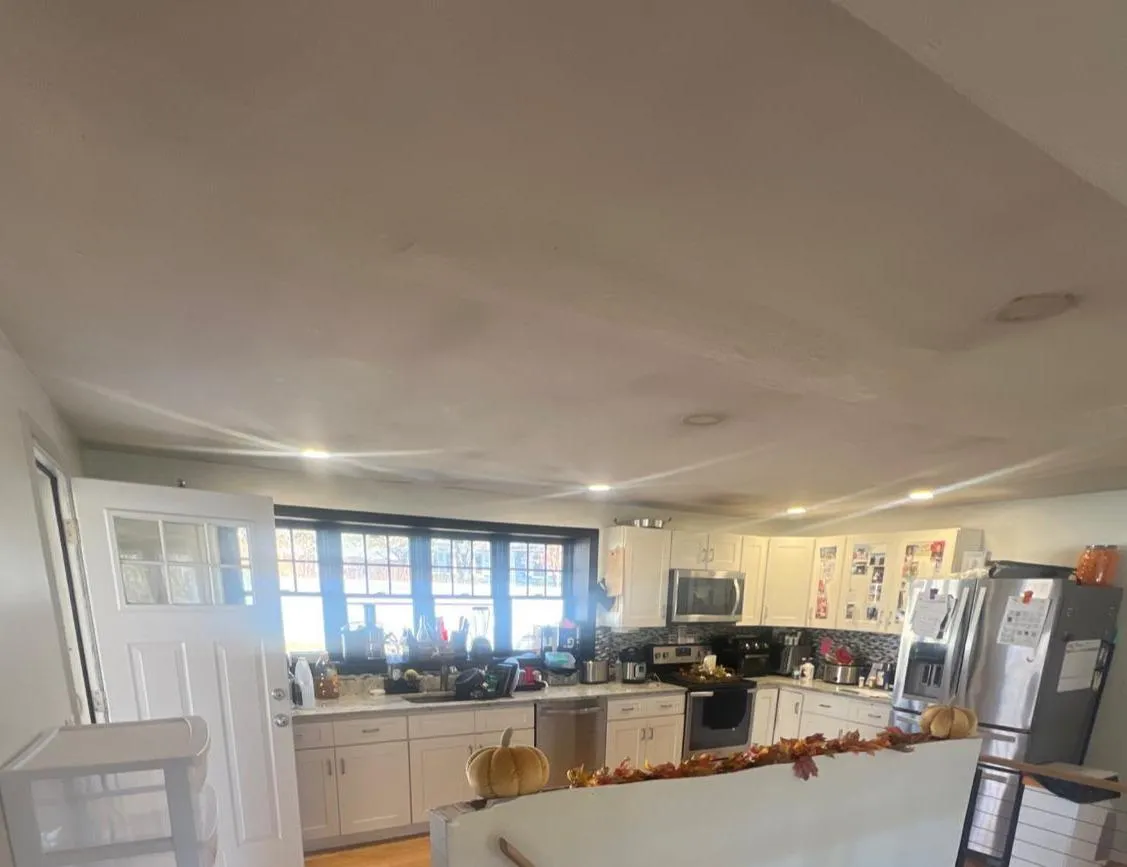
How to eliminate mold on walls?
Finding mold on your walls can be a frustrating and unhealthy problem for any homeowner in the U.S. More than just an eyesore, mold can trigger allergies, asthma, and other respiratory issues, while also causing structural damage to your home. The good news is that for most common surface molds, you can tackle the problem yourself. The key is understanding why mold occurs and choosing safe, permanent solutions.
Why mold occurs: Moisture, humidity & leaks
Mold thrives in damp, dark environments. It needs three things to grow:
Moisture: This is the most critical factor. Mold spores are always present in the air, but they only grow when they have a consistent source of moisture.
Humidity: High indoor humidity levels (above 60%) create an ideal breeding ground for mold, especially in areas with poor ventilation.
Leaks: Water leaks from pipes, roofs, windows, or even persistent condensation can saturate walls, providing a continuous water source for mold to flourish.
Before you start cleaning, it's essential to identify and fix the source of moisture. Otherwise, the mold will simply return.
Choose your cleaner: Vinegar, peroxide, baking soda, bleach
For common household mold on non-porous surfaces like painted walls, several effective and safe cleaners can be used. Always wear gloves, eye protection, and a mask to avoid inhaling spores or contact with the cleaner. Ensure the area is well-ventilated.
White vinegar: Spray, sit 1 hour, wipe
White vinegar is a mild acid that can kill 82% of mold species, including black mold. It's safe for most surfaces and doesn't produce harsh fumes.
Prepare: Pour undiluted white vinegar into a spray bottle.
Apply: Spray directly onto the moldy area, saturating it thoroughly.
Wait: Let the vinegar sit for at least one hour to allow it to penetrate and kill the mold.
Wipe: Use a disposable cloth or sponge to wipe away the mold. No need to rinse if you don't mind the faint vinegar smell (it dissipates as it dries).
Scrub (if needed): For stubborn spots, use a stiff brush to gently scrub the area before wiping.
Hydrogen peroxide mix for porous surfaces
Hydrogen peroxide (3% solution) is an antifungal, antiviral, and antibacterial solution that's effective on mold and safer than bleach for many surfaces, especially porous ones.
Prepare: Pour 3% hydrogen peroxide into a spray bottle. Do not dilute.
Apply: Spray the moldy surface until saturated.
Wait: Let it sit for 10-15 minutes to break down the mold.
Scrub & Wipe: Scrub the area with a brush or sponge, then wipe clean with a cloth.
Baking soda paste scrubbing approach
Baking soda is a natural deodorizer and a mild abrasive, making it excellent for scrubbing away mold stains. It's also safe for pets and children.
Make Paste: Mix equal parts baking soda and water to form a thick paste.
Apply: Spread the paste over the moldy area.
Scrub: Use a brush or sponge to scrub the mold and paste into the wall.
Rinse & Wipe: Rinse the area with water and wipe thoroughly with a clean cloth. You can also mix baking soda with vinegar for a potent, fizzing cleaner (though the chemical reaction can reduce vinegar's mold-killing power).
Bleach (use with caution)
While effective, bleach (sodium hypochlorite) only kills surface mold on non-porous materials and doesn't penetrate to kill roots on porous surfaces like drywall. It also produces harsh fumes.
Dilute: Mix 1 cup of bleach with 1 gallon of water.
Apply: Apply with a sponge or spray bottle.
Wait: Let it sit for a few minutes.
Wipe: Wipe thoroughly. NEVER mix bleach with ammonia or other cleaners, as this creates dangerous toxic fumes.
For severe cases: Drywall removal & encapsulation
If mold growth is extensive (covering more than 10 square feet) or if the drywall is soft, crumbling, or heavily saturated, simply cleaning the surface won't be enough. The mold has likely penetrated deep into the wall.
Containment: Isolate the affected area with plastic sheeting.
Removal: Carefully cut out and remove the moldy sections of drywall.
Clean Framing: Clean any mold on the wood studs or other framing behind the drywall using a suitable mold cleaner (e.g., hydrogen peroxide or a commercial mold killer). Ensure these surfaces are completely dry.
Encapsulation: For extra protection against future growth, you can apply a mold-resistant primer or encapsulant to the cleaned framing before installing new drywall.
Replace: Install new mold-resistant drywall.
Key prevention tips: Reduce humidity, ventilate, fix leaks
Preventing mold is far easier and safer than cleaning it.
Reduce Humidity: Use a dehumidifier in damp areas like basements, bathrooms, and laundry rooms to keep humidity levels below 60%.
Ventilate: Ensure proper ventilation in bathrooms (use exhaust fans during and after showers) and kitchens (use range hoods while cooking). Open windows periodically to allow for airflow.
Fix Leaks Promptly: Repair any leaky pipes, roofs, or windows immediately. Dry any wet areas within 24-48 hours to prevent mold growth.
Insulate Pipes: Insulate cold pipes to prevent condensation.
Improve Air Circulation: Keep furniture away from walls to allow air to circulate.
When to seek professional help
While DIY methods work for small mold issues, call in a professional mold remediation service if:
Extensive Growth: The mold covers an area larger than 10 square feet.
Health Concerns: You or family members experience severe allergic reactions, respiratory problems, or other health issues when mold is present.
Hidden Mold: You suspect mold behind walls, under flooring, or in HVAC systems, indicated by a strong musty smell.
Flooding: Your home has experienced significant water damage or flooding.
Black Mold: While many types of mold appear black, if you suspect Stachybotrys chartarum (toxic black mold), it's safer to call a professional.
Addressing mold quickly and effectively protects both your home's integrity and your family's health.
Don't let mold compromise your home's health! For professional mold removal, prevention, or home renovation services that ensure a healthy living environment, contact Pessotti Construction today!
